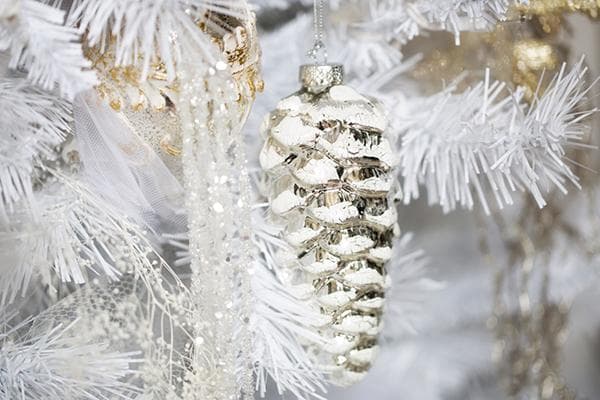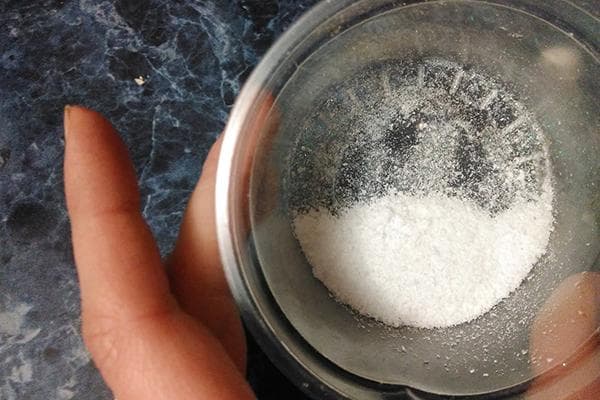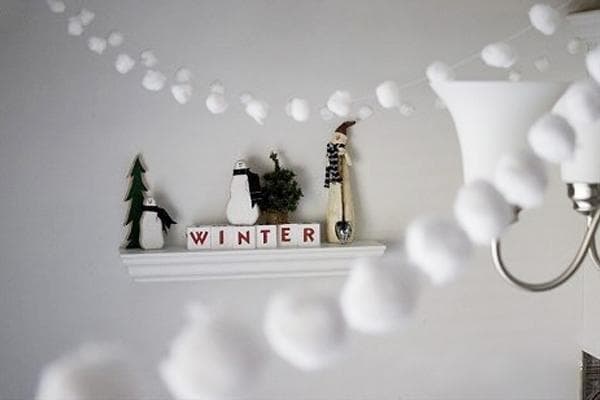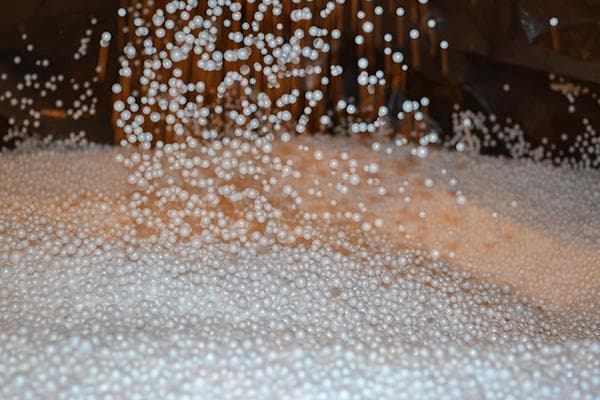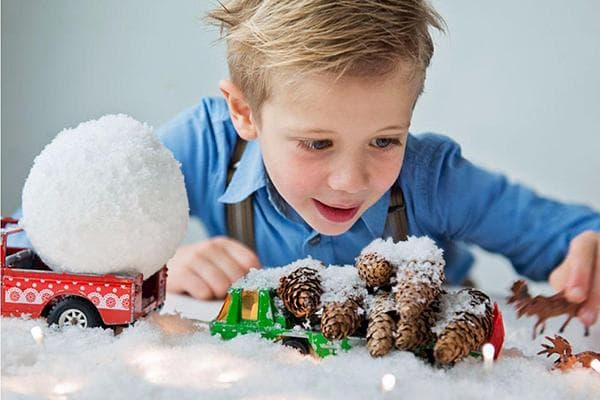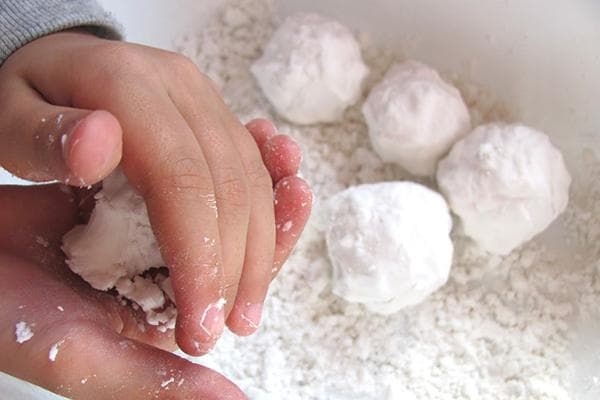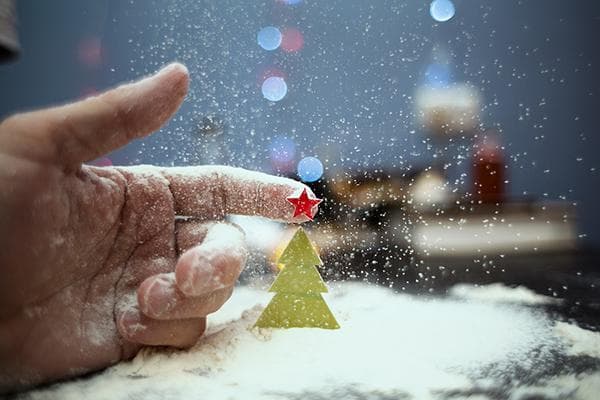How to make artificial snow at home - simple ingredients, fabulous results
The calendar says December, but outside the window the grass is stubbornly green and there is not a hint of frost. The New Year tree has already been decorated with balls, tinsel, and even a star on the top, but something is still missing. I want to play in the snow, but I’m too lazy to put on five layers of clothes and go outside. In all cases, artificial snow will come to the rescue, which is not difficult to make with your own hands.
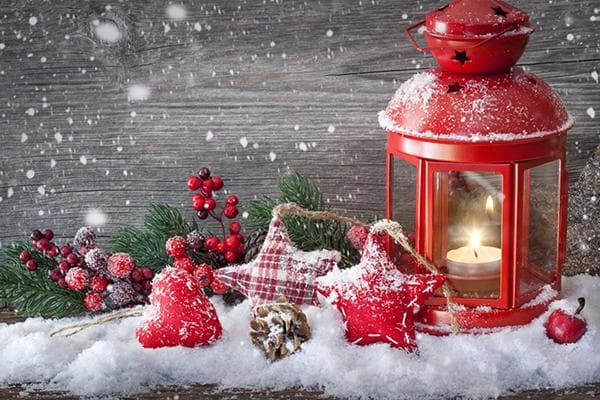
For decoration
Artificial snow is an integral element of holiday decorations. It is used to decorate fir branches, with its help ordinary cones and nuts are turned into snow-covered toys, and it also looks great in the interior as a component of compositions dedicated to the New Year.
Depending on how the snow will be used, you can prepare it in one of the following ways.
Made from acrylic paint and varnish
White acrylic paint itself is good for simulating snow on three-dimensional objects. Cones, bunches of dried berries and branches covered with it look very realistic. However, it should be applied not with a brush, but with a piece of fine-pored foam sponge - this will convey the fluffy and heterogeneous texture of the snowflakes.
To achieve different effects, other components are added to acrylic paint or varnish:
- Acrylic paint + glossy acrylic varnish + baking soda - apply this mixture with a large round brush (you can take a cosmetic one for powder).The layer should be thick enough, then the result will be an imitation of dense old snow.
- Acrylic varnish + coarse table salt + PVA glue - snow prepared according to this recipe looks wet and lumpy. It is not suitable for flat and thin surfaces such as branches and spruce feet. You won’t be able to apply it with strokes; you need to apply it with a wide brush.
- Acrylic paint + sugar — fits on any surface. Creates the effect of hard frozen snow. Applies well with a sponge.
- Acrylic paint + semolina + PVA glue — this mixture produces the most beautiful snow, textured, lush and light. It holds up well and doesn't fall off.
The proportions of each ingredient are determined by eye.
From salt
Loose snow, which can be used to decorate the base of a Christmas tree or fill a glass vessel for a bouquet of pine branches, can be easily prepared from kitchen salt with large crystals and sparkles. Both components are mixed in the desired quantities.
From threads and cotton wool
Snowballs made from cotton pads are perfect for room decor. To make them, the disks must be torn into very small pieces, and then the resulting mass must be rolled into balls.
Another option for making snowballs involves using fluffy wool or mohair yarn. The thread is wound around four fingers (index, middle, ring and little fingers), making 10–15 turns. Then remove the skein from your hand, fold it in half and cut it finely and finely with scissors. Pieces of thread easily stick together into snowballs.
Finished snowballs will look good under the Christmas tree or in a small decorative bucket.
Made from polystyrene foam and polyethylene foam
The foam inserts that come in boxes with household appliances make excellent snow.To divide a whole piece into individual snowflake balls, you need to arm yourself with a fork and poke the foam with it. This should be done until the material crumbles completely.
But foamed polyethylene is often found in parcels. At the post office they use it to wrap dishes, glasses and other fragile items. It's easy to turn a sheet of polyethylene into snow - just grate it on a potato grater (with prickly cells).
For games
If the landscape outside the window looks more like autumn than winter, this is not a reason to be discouraged and postpone snow games until better times. A soft white substance that looks almost like real snow, but does not melt at room temperature, can be made with your own hands from scrap materials.
Made from sodium polyacrylate
The name of this substance sounds scary, but you don’t have to rob a chemical laboratory to get it. It is enough to take several diapers, cut them and remove the contents. Next, the resulting powder should be poured into any container, plastic or glass, poured with a small amount of warm water and wait until the mixture becomes gel-like. After this comes the most important step - the gel must be rubbed in your hands until it turns into snow flakes.
This artificial snow is absolutely safe as long as you don’t try it “by the teeth”. So it's better to keep an eye on your kids while they make a snowman or build a snow castle.
From shaving foam
It will take no more than five minutes to prepare snow using this method. The sequence of actions should be like this:
- A lot of foam is squeezed out of the container into a wide container.
- Baking soda is poured into the foam.
- Mix the ingredients by hand until they turn into something like snow.The mass should be slightly moist and stick together well into a lump. If the snow turns out to be too liquid, add a little more soda, and if it is too dry, dilute it with an additional portion of foam.
For drawing
You can’t draw with real snow, but you can easily draw with artificial snow. There are several options for preparing snow paint. The simplest of them involves the use of toothpaste (it should not be colored or gel). The paste is squeezed onto a saucer and water is added drop by drop, stirring the mixture with a brush. When the consistency becomes similar to thick sour cream, you can start drawing. The snow in the picture looks textured and voluminous.
If there are small children in the house who do not yet understand safety rules, as well as pets, then artificial snow should only be used in areas inaccessible to them. Despite the absence of toxic substances in the above recipes, if such snow is accidentally ingested, the consequences can be unpredictable.
